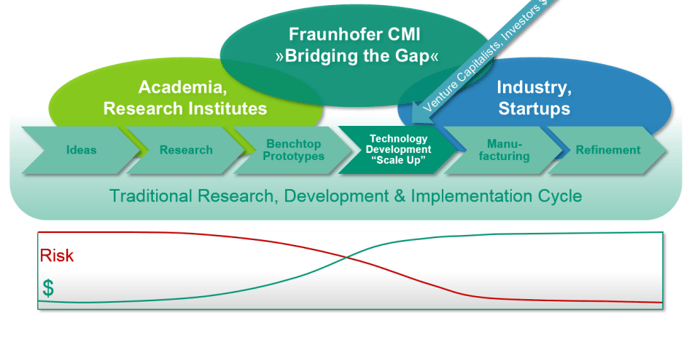Transforming Research into Functional Technology
Fraunhofer Institutes work with industry and universities to scale up cutting-edge research into real working technologies on an industrial timetable.
If one looks at the product development cycle, as shown in the image below, it seems that the early stage R&D is typically done in universities, national laboratories, and corporate research centers. The latter implementation part is typically done in industry. However, there is a gap in the middle which very few organizations address. This gap, both a knowledge gap as well as a funding gap, greatly slows down the product development cycle. It is precisely this area that Fraunhofer focuses on and has done so very successfully for over 50 years, allowing it to become Europe's largest R&D organization. More concretely, Fraunhofer USA CMI teams up with universities and industrial clients to quickly and cost-effectively move new ideas at the concept stage to the factory or hospital floor.
This same gap also applies to the research commercialization process in the U.S. The current process is chaotic and way too lengthy. Innovative ideas often linger on in the research phase for many years. Why? Because of this gap between research and product development. It can be seen in the graph below that the required funding increases as the total cycle progresses, while the risk of technological failure at the same time decreases. Venture capitalists and most other investors are adverse to technological risk. They typically don't invest until after the intersection of these two curves. Fraunhofer provides a unique resource that addresses this problem by developing the innovation into a functional technology that can be validated and demonstrated, in effect de-risking it. Thus, investors can make their investment decision solely on their assessment of the market opportunity and business value proposition without the additional risk of the technology not panning out.

